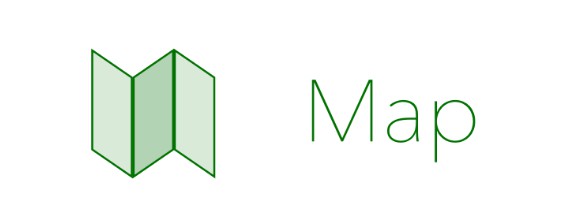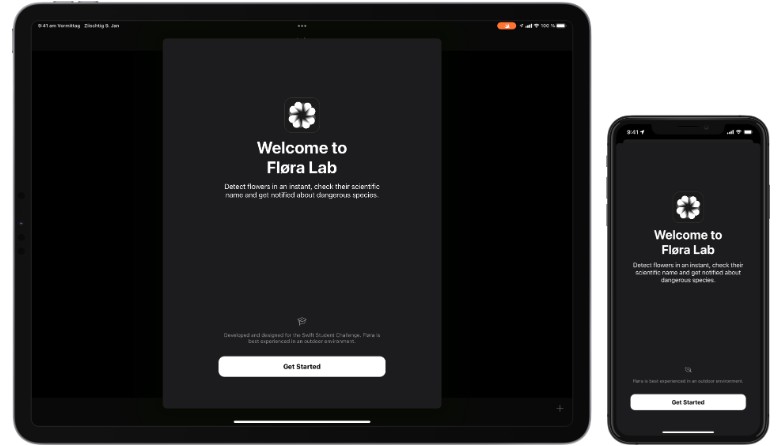MapKit’s SwiftUI implementation of Map (UIKit: MKMapView) is very limited. This library can be used as a drop-in solution (i.e. it features a very similar, but more powerful and customizable interface) to the existing Map and gives you so much more features and control:
? Features
? Annotations
- Create annotations from annotationItems as in the default MapKit SwiftUI implementation.
- Or: Create annotations from a list of MKAnnotation objects – you can even use your existing MKAnnotationView implementations!
? Overlays
- Use a SwiftUI-style API based on
Identifiablewith overlay items and a closure to create overlays from these items - Or: Use existing MKOverlay / MKOverlayRenderer objects
? Appearance / Behavior Customization
- Map type (MKMapType)
- User tracking mode (MKUserTrackingMode)
- Interaction modes (rotation, pitch, zoom and pan)
- Point of interest filter (MKPointOfInterestFilter).
? Adapt visibility of:
- Buildings
- Compass
- Pitch control
- Scale
- Traffic
- User heading
- User location
- Zoom controls
? Custom controls
MapCompassfor MKCompassButtonMapPitchControlfor MKPitchControlMapScalefor MKScaleViewMapZoomControlfor MKZoomControl
? Supported Platforms
| ? | iOS 13+ |
|---|---|
| ? | macOS 10.15+ |
| ? | tvOS 13+ |
| ⌚️ | watchOS 6+ |
Keep in mind that not all features are equally available on all platforms (based on what MapKit provides) and therefore might not be available here either. However, if you can use them using UIKit, there is a very high change that it is available here as well – if not: Let me/us know by creating an issue!
??? Usage on iOS, macOS and tvOS
Very similar to MapKit’s SwiftUI wrapper, you simply create a Map view inside the body of your view. You can define a region or mapRect, the map type (MKMapType), a pointOfInterestFilter (MKPointOfInterestFilter), interactions Modes (with values: .none, .pitch, .pan, .zoon, .rotate and .all – which can be combined as you wish) and showsUserLocation.
import Map
import SwiftUI
struct MyMapView: View {
let locations: [MyLocation]
let directions: MKDirections.Response
@State private var region = MKCoordinateRegion()
@State private var userTrackingMode = UserTrackingMode.follow
var body: some View {
Map(
coordinateRegion: $region,
type: .satelliteFlyover,
pointOfInterestFilter: .excludingAll,
informationVisibility: .default.union(.userLocation),
interactionModes: [.pan, .rotate],
userTrackingMode: $userTrackingMode,
annotationItems: locations,
annotationContent: { location in
ViewMapAnnotation(coordinate: location.coordinate) {
Color.red
.frame(width: 24, height: 24)
.clipShape(Circle())
}
},
overlays: directions.routes.map { $0.polyline },
overlayContent: { overlay in
RendererMapOverlay(overlay: overlay) { _, overlay in
if let polyline = overlay as? MKPolyline else {
let isFirstRoute = overlay === directions.routes.first?.overlay
let renderer = MKPolylineRenderer(polyline: polyline)
renderer.lineWidth = 6
renderer.strokeColor = isFirstRoute ? .systemBlue : .systemGray
return renderer
} else {
assertionFailure("Unknown overlay type found.")
return MKOverlayRenderer(overlay: overlay)
}
}
}
)
.onAppear {
region = // ...
}
}
}
? Annotations: The modern approach
You can use a collection of items conforming to Identifiable and a closure that maps an item to its visual representation (available types: MapPin, MapMarker and ViewMapAnnotation for custom annotations from any SwiftUI View).
Map(
coordinateRegion: $region,
annotationItems: items,
annotationContent: { item in
if <first condition> {
ViewMapAnnotation(coordinate: location.coordinate) {
Color.red
.frame(width: 24, height: 24)
.clipShape(Circle())
}
else if <second condition> {
MapMarker(coordinate: item.coordinate, tint: .red) // tint is `UIColor`, `NSColor` or `Color`
} else {
MapPin(coordinate: item.coordinate, tint: .blue) // tint is `UIColor`, `NSColor` or `Color`
}
}
)
? Annotations: The old-fashioned approach
Moving an existing code base over to SwiftUI is hard, especially when you want to keep methods, types and properties that you have previously built. This library, therefore, allows the use of MKAnnotation instead of being forced to the new Identifiable style. In the additional closure, you can use one of the options mentioned in the modern-approach. Alternatively, we also have an option to use your own MKAnnotationView implementations. Simply create a struct conforming to the following protocol and you are good to go.
public protocol MapAnnotation {
static func registerView(on mapView: MKMapView)
var annotation: MKAnnotation { get }
func view(for mapView: MKMapView) -> MKAnnotationView?
}
In registerView(on:), your custom annotation implementation can register a cell type for dequeuing using MKMapView.register(_:forAnnotationViewWithReuseIdentifier:). To dequeue the registered cell, implement the view(for:) method, similar to MKMapViewDelegate.mapView(_:viewFor:).
Note: Please make sure not to create the value of the property annotation dynamically. You can either use an existing object or create the object in your type’s initializer. Simply put: Do not make annotation a computed property!
? Overlays: The modern approach
Similarly to how annotations are handled, you can also use a collection of Identifiable and a closure mapping it to specific overlay types. These overlay types currently contain MapCircle, MapMultiPolygon, MapMultiPolyline, MapPolygon and MapPolyline and this list can easily be extended by creating a type conforming to the following protocol:
public protocol MapOverlay {
var overlay: MKOverlay { get }
func renderer(for mapView: MKMapView) -> MKOverlayRenderer
}
In your implementation, the renderer(for:) method creates a renderer for the overlay, similar to MKMapViewDelegate.mapView(_:rendererFor:).
Note: Please make sure not to create the value of the property overlay dynamically. You can either use an existing object or create the object in your type’s initializer. Simply put: Do not make overlay a computed property!
? Overlays: The old-fashioned approach
Especially when working with MKDirections or when more customization to the MKOverlayRenderer is necessary, you can also provide an array of MKOverlay objects and use your own MKOverlayRenderer.
For this, we provide RendererMapOverlay:
Map(
coordinateRegion: $region,
overlays: directions.routes.map { $0.polyline },
overlayContent: { overlay in
RendererMapOverlay(overlay: overlay) { mapView, overlay in
guard let polyline = overlay as? MKPolyline else {
assertionFailure("Unknown overlay type encountered.")
return MKMapOverlayRenderer(overlay: overlay)
}
let renderer = MKPolylineRenderer(polyline: polyline)
renderer.lineWidth = 4
renderer.strokeColor = .red
return renderer
}
}
)
? Custom Map Controls
For the use of MapCompass, MapPitchControl, MapScale and MapZoomControl you will need to associate both the Map and the control with some form of a shared key. This key needs to conform to the Hashable protocol. For each key, there must only be one Map (or MKMapView respectively) in the view hierarchy at once.
Example: We want to display a scale overlay at the topLeading edge of a Map. To accomplish this, let’s take a look at the following code snippet.
struct MyMapView: View {
@Binding var region: MKCoordinateRegion
var body: some View {
Map(coordinateRegion: $region)
.mapKey(1)
.overlay(alignment: .topLeading) {
MapScale(key: 1, alignment: .leading, visibility: .visible)
.fixedSize()
.padding(12)
}
}
}
⌚️ Usage on watchOS
Since MapKit is very limited on watchOS, there is a separate (also similary limited) wrapper in this library. If you are only targeting watchOS, it might not make sense to use this library as the underlying feature set is already very limited (e.g. no overlay support, only a few kinds of possible annotations, etc).
We do include a drop-in interface though for projects that target multiple platforms and share code extensively across these platforms.
Map(
coordinateRegion: $region,
informationVisibility: [.userHeading, .userLocation],
userTrackingMode: $userTrackingMode,
annotationItems: annotationItems,
annotationContent: { item in
if <first condition> {
ImageAnnotation(coordinate: item.coordinate, image: UIImage(...), centerOffset: CGPoint(x: 0, y: -2)
} else {
MapPin(coordinate: item.coordinate, color: .red) // color can only be red, green or purple
}
}
)
? Installation
Map is currently only available via Swift Package Manager. See this tutorial by Apple on how to add a package dependency to your Xcode project.
✍️ Author
Paul Kraft
? License
Map is available under the MIT license. See the LICENSE file for more info.




